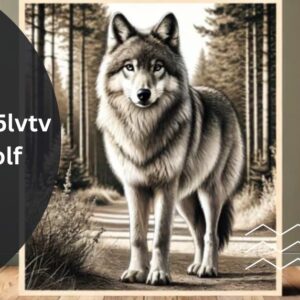Poltergeist (1982) used real skeletons, adding a chilling layer to my viewing experience. Learning this made the infamous pool scene even more terrifying and unforgettable. It’s a haunting reminder of the lengths filmmakers once went for authenticity.
The 1982 movie “Poltergeist” used real skeletons in its famous pool scene, making it even more frightening. This shocking fact adds a creepy reality to the horror film. It’s a haunting detail that still surprises fans today.
Let’s uncover the unsettling truth about “the 1982 movie Poltergeist used real skeletons as – Tymoff.” This surprising fact adds a creepy twist to the film and raises questions about how movies are made. Join us as we explore this eerie detail that continues to intrigue audiences.
Were real skeletons actually used in the 1982 movie “Poltergeist”?
Yes, real skeletons were indeed used in the 1982 movie “Poltergeist.” This fact became a point of controversy and surprise for many viewers and industry insiders alike.

The decision to use real skeletons was reportedly made due to budget constraints and the desire for authenticity in certain scenes, particularly the haunting pool sequence where JoBeth Williams’ character encounters spectral entities.
The use of real human skeletons added a chilling realism to the film’s supernatural themes, but it also sparked ethical debates about the treatment of human remains in filmmaking.
This revelation had lasting impacts on how audiences perceived the film and raised questions about the responsibilities of filmmakers when handling sensitive materials.
It also prompted discussions within the industry about the ethical guidelines surrounding the use of real props versus synthetic alternatives in movies.
Read: yvette prieto net worth – Explore Her Story!
Has the use of real skeletons in “Poltergeist” influenced filmmaking practices since then?
Shift towards ethical standards:
The controversy surrounding “Poltergeist” prompted the film industry to reassess its practices regarding the use of human remains and other sensitive materials in movies.
Regulations and guidelines:
It led to the establishment of stricter guidelines and regulations regarding the sourcing, handling, and use of props in films, especially those involving human remains.
Advancements in special effects:
Filmmakers increasingly turned to advancements in special effects technology, such as CGI and animatronics, which provided realistic alternatives without ethical concerns.
Transparency and disclosure:
There was a greater emphasis on transparency and disclosure to actors and crew members regarding the use of props and potentially sensitive materials in film production.
Public and industry awareness:
The incident raised awareness among both the public and the film industry about the ethical implications of using real human skeletons, influencing future decisions and practices in filmmaking.
Who made the decision to use real skeletons in “Poltergeist”?
The decision to use real skeletons in “Poltergeist” was made by the film’s production team, likely in collaboration with the director, Tobe Hooper, and producer Steven Spielberg.
They opted for real skeletons due to budget considerations and a desire for authenticity in certain scenes, such as the infamous pool scene.
This choice added a disturbingly realistic element to the film’s supernatural theme, but it also stirred ethical discussions about the use of human remains in filmmaking.
Why did the filmmakers choose to use real skeletons instead of artificial props?

The filmmakers chose to use real skeletons in “Poltergeist” instead of artificial props mainly for budget reasons and to achieve a more authentic look.
Using real skeletons was cheaper than creating detailed artificial replicas, which allowed them to allocate their resources more effectively across other aspects of the film.
Additionally, they believed that real skeletons would enhance the realism of the scenes, making the supernatural elements feel more unsettling and believable to the audience.This decision later sparked controversy and ethical debates within the film industry and among viewers.
Read: Tamisie – Taste the flavours of Tamisie today!
What impact did the revelation have on the public and film industry at the time?
The revelation that the 1982 movie “Poltergeist” used real skeletons had a significant impact on both the public and the film industry. It caused shock and surprise among moviegoers who were unaware of this fact, as it added a disturbing layer to the film’s already eerie reputation.
The use of real human skeletons sparked ethical concerns and debates about the treatment of human remains in movies.
It prompted discussions about transparency in filmmaking and raised questions about the boundaries between artistry and ethical considerations.
This revelation influenced how future films approached the use of props and special effects, encouraging greater scrutiny and adherence to ethical standards in the industry.
Were there any legal or ethical concerns raised about using real skeletons in the film?

- Ethical considerations: There were widespread ethical concerns about the use of real human skeletons in a horror film, particularly regarding respect for the deceased and their families.
- Consent and disclosure:Critics argued that the actors and possibly the crew were not adequately informed about the use of real skeletons, raising issues of consent and transparency.
- Industry guidelines: The controversy prompted discussions within the film industry about establishing clearer guidelines regarding the use of human remains and other sensitive materials in movies.
- Legal implications: While not illegal, using real skeletons in films requires adherence to specific regulations and guidelines to ensure proper handling and respect for human remains.
- Public reaction: The public reacted strongly to the revelation, with many expressing discomfort and calling for stricter regulations or bans on using real human remains as props in films.
Read: Tamisie – Taste the flavours of Tamisie today!
FAQs:
1. Were real human skeletons actually used in the filming of “Poltergeist”?
Yes, real human skeletons were used in certain scenes of “Poltergeist,” notably the pool scene, adding an eerie realism to the film.
2. Who made the decision to use real skeletons instead of artificial props in the movie?
The film’s production team, seeking authenticity and cost-effectiveness, made the decision to use real skeletons in specific scenes of “Poltergeist.”
3. What impact did the revelation about using real skeletons have on the public and the film industry?
The revelation sparked controversy, leading to debates about ethical filmmaking practices and prompting the industry to establish stricter guidelines for handling props, particularly human remains.
4. Were there any legal or ethical concerns raised about the use of real skeletons in “Poltergeist”?
Yes, the use of real skeletons raised ethical concerns regarding the treatment of human remains and respect for the deceased and their families, as well as legal questions about consent and transparency.
Conclusion:
The controversy surrounding the use of real skeletons in the 1982 movie “Poltergeist” continues to resonate within the film industry and among audiences.
While the decision to employ authentic human remains added a chilling realism to the film’s eerie atmosphere, it also sparked ethical debates about the treatment of deceased individuals in cinema.
The aftermath saw calls for greater transparency and ethical standards in filmmaking practices, influencing subsequent guidelines and practices. Ultimately, “Poltergeist” serves as a stark reminder of the delicate balance between artistic authenticity and ethical responsibility in the world of cinema.
Read More:





